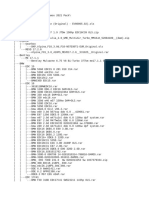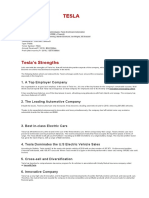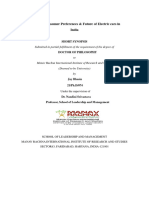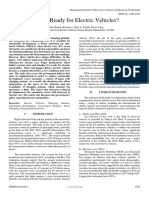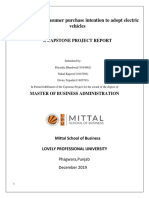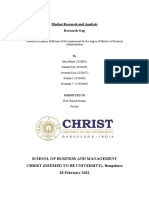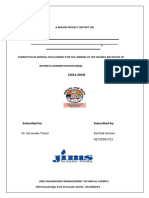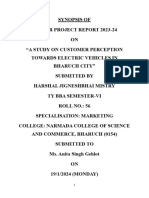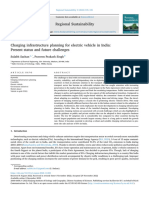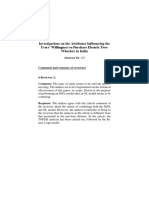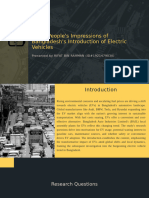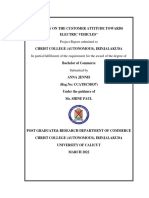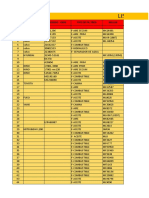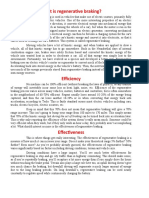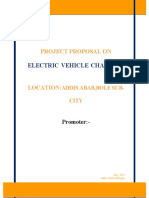Vol. VII, No. 12 (IV) : 2021 ISSN: 2277-7067: Shodhsamhita: Journal of Fundamental & Comparative Research
Vol. VII, No. 12 (IV) : 2021 ISSN: 2277-7067: Shodhsamhita: Journal of Fundamental & Comparative Research
Uploaded by
CKEC-CSE IVCopyright:
Available Formats
Vol. VII, No. 12 (IV) : 2021 ISSN: 2277-7067: Shodhsamhita: Journal of Fundamental & Comparative Research
Vol. VII, No. 12 (IV) : 2021 ISSN: 2277-7067: Shodhsamhita: Journal of Fundamental & Comparative Research
Uploaded by
CKEC-CSE IVOriginal Title
Copyright
Available Formats
Share this document
Did you find this document useful?
Is this content inappropriate?
Copyright:
Available Formats
Vol. VII, No. 12 (IV) : 2021 ISSN: 2277-7067: Shodhsamhita: Journal of Fundamental & Comparative Research
Vol. VII, No. 12 (IV) : 2021 ISSN: 2277-7067: Shodhsamhita: Journal of Fundamental & Comparative Research
Uploaded by
CKEC-CSE IVCopyright:
Available Formats
Shodhsamhita : Journal of Fundamental & Comparative Research
Vol. VII, No. 12(IV) : 2021
ISSN: 2277-7067
A STUDY ON CUSTOMER SATISFACTION ON ELECTRIC VEHICLE BUYING
DR.K.SELVARAJU Assistant professor Department Of Master Of Business Administration (MBA)
K.S.R College of Engineering (Autonomous),Tiruchengode.
Mr.C.S.DARSHAN (2061008) Department Of Master Of Business Administration (MBA) K.S.R
College of Engineering (Autonomous),Tiruchengode.
Mr.S.DHARMESHWARAN (2061009) Department Of Master Of Business Administration (MBA)
K.S.R College of Engineering (Autonomous),Tiruchengode
Mr.S.DILEEPKUMAR (2061010) Department Of Master Of Business Administration (MBA)
K.S.R College of Engineering (Autonomous),Tiruchengode
ABSTRACT
Electric vehicles (EVs) are a promising technology for achieving a sustainable transport sector in the
future, due to their very low to zero carbon emissions, low noise, high efficiency, and flexibility in
grid operation and integration. This chapter includes an overview of electric vehicle technologies as
well as associated energy storage systems and charging mechanisms. Different types of electric-drive
vehicles are presented. These include battery electric vehicles, plug-in hybrid electric vehicles, hybrid
electric vehicles and fuel cell electric vehicles. The topologies for each category and the enabling
technologies are discussed. Various power train configurations, new battery technologies, and
different charger converter topologies are introduced. Electrifying transportation not only facilitates a
clean energy transition, but also enables the diversification of transportation’s sector fuel mix and
addresses energy security concerns. In addition, this can be also seen as a viable solution, in order to
alleviate issues associated with climate change. Furthermore, charging standards and mechanisms and
relative impacts to the grid from charging vehicles are also presented.
KEYWORDS: Electric vehicles, Battery Capacity, Energy Usage, Range(mileage), Development
power, Customers Satisfaction.
INTRODUCTION
India is one of the top ten automotive markets in the world and given its burgeoning middle class
population with buying potential and the steady economic growth, acceleration automotive sales is
expected to continue. In the last couple of years, there has been a lot of discussion around the prices
of fuel – apart from the deregulation of petrol prices. Moreover the threat of disruption of supplies
from the middle east has heightened the debate on energy security and brought the focus on to alternate
drivetrain technologies.
The potential for alternative technologies in automobiles such as electric vehicles (EV) in India, as in
the case of many other comparable markets, depends on improved battery technologies, driving
ranges, government incentives, regulations, lower prices and better charging infrastructure.
There seems to be a lot of interest on the part of Internal Combustion Engine (ICE) based
manufacturers to adopt electric technology, not just supplemental to the ICE, but as a stand-alone
offering. There are also specialized EV manufacturers that have come up all over the world.
While many of the factors that influence the EV market are understood intellectually, we carried out
a consumer survey to study perceptions and expectations of potential for alternative technologies in
automobiles such as electric vehicles (EV) and hybrid EV.
Assessing future demand for electric vehicles was somewhat challenging since it meant testing
consumer preferences for a product with which they are largely unfamiliar. For this reason.
we focused on uncovering consumers familiarity with EV technologies and products; with their
opinions around price, brand, range, charging, the infrastructure, and the cost of ownership; and with
the consumer‘s imagined ―fit‖ of an EV in his or her lifestyle given a range of demographic
parameters.
Journal of Kavikulaguru Kalidas Sanskrit University, Ramtek Page | 19
Shodhsamhita : Journal of Fundamental & Comparative Research
Vol. VII, No. 12(IV) : 2021
ISSN: 2277-7067
Objectives of the study
Primary Objective
To study the perceptions and expectations of potential, for alternative technologies in
automobiles, such as Electric Vehicles.
Secondary Objective
To know why electric vehicle couldn’t get enough consumer attraction.
To study the willingness of buyers of considering Electric Vehicles as a practical commuting option
and at when.
To study the maximum price consumers can afford for buying an Electric Vehicles.
Scope of the Study
As electric vehicle manufacturing is becoming popular every day, its market share is also
expected to rise greatly. India's GDP is expected to grow by an amazing 25% by 2022. The best part
is that, apart from reducing environmental pollution, EVs can lower oil import by about $60 Billion
by 2030.
Limitation of study
Due to efficiency of electric engines as compared to combustion engines, even when the electricity
used to charge electric vehicles comes from a CO2-emitting source, such as a coal- or gasfired powered
plant, the net CO2 production from an electric car is typically one-half to one-third of that from a
comparable combustion vehicle.
Electric vehicles release almost no air pollutants at the place where they are operated.
In addition, it is generally easier to build pollution-control systems into centralised power stations than
retrofit enormous numbers of cars.
RESEARCH METHODOLOGY
Research Design
The descriptive research design is used in this study.
Sources of Data Primary Data
Primary Data is collected from the peoples in Salem City.
Secondary Data
Secondary Data is collected from books, websites, articles and internet.
SAMPLE DESIGN
Population
Peoples in Salem City.
Sample Size
Sample size of 50 respondents from salem.
Sampling Method
Convenience Sampling Method has been used for this study.
Method of Data Collection
Data is collected through Structured Questionnaire.
Tools for Analysis
Percentage Analysis
DATA ANALYSIS AND DISCUSSION
Profession of the respondents
Profession of the respondents
S.NO Profession No of Respondents Percent
1 Student 21 42
2 Self Employed 8 16
Journal of Kavikulaguru Kalidas Sanskrit University, Ramtek Page | 20
Shodhsamhita : Journal of Fundamental & Comparative Research
Vol. VII, No. 12(IV) : 2021
ISSN: 2277-7067
3 Government Job 1 2
4 Private Job 20 40
Total 50 100
Interpretation
According to the table 4.1.1, 42% of the respondents was under the student, 16% of the
respondents was under the Self Employed, 40% of the respondents was under the Private job and 2%
of the respondents was under the Government job.
Gender of the Respondents
Gender of the Respondents
S.NO Gender No of Respondents Percent
1 Male 35 70
2 Female 15 30
Total 50 100
Interpretation
According to the 4.1.2, 70 percentage of the respondents were Male and 30 percentage of the
respondents were Female.
Mode of Transportation of Respondents
Mode of Transportation of Respondents
S. No Mode of No of Respondents Percent
Transportation
1 Own vehicle 32 77.6
2 Taxi/Auto 3 4.2
Journal of Kavikulaguru Kalidas Sanskrit University, Ramtek Page | 21
Shodhsamhita : Journal of Fundamental & Comparative Research
Vol. VII, No. 12(IV) : 2021
ISSN: 2277-7067
3 Public bus 6 7
4 Train 8 10.2
Total 49 100
Interpretation
According to the table 4.1.6, 77.6% of the respondents using own vehicle, 4.2% of the
respondents using Taxi/Auto, 7% of the respondents using public bus and 10.2% of the respondents
using Train.
REVIEW OF LITERATURE
Many governments have initiated and implemented policies to stimulate and encourage electric
vehicle (EV) production and adoption (Sierzchula, Bakker, Maat, & Van Wee, 2014).
The expectation is that better knowledge of consumer preferences for EV can make these policies
more effective and efficient. Many empirical studies on consumer preferences for EV have been
published over the last decades, and a comprehensive literature review would be helpful to synthesise
the findings and facilitate a more well-rounded understanding of this topic. Rezvani, Jansson, and
Bodin (2015)
In 1999,AVL Company proposed a hybrid system that used a 50 cccarburetted lean-burn two-stroke
engine with a 0.75 kW electric motor mounted on the engine crankshaft mainly to provide increased
torque during acceleration.[1]
Su-Hau et al (2004) focused on the highly efficient energy usage of the battery energy and proposed
an integrated management system for electric motor.[2]
David and Sheng-Chung (2004) proposed new parallel-type hybrid-electric-power system comprises
an engine’s energy distribution and a torque-integrated mechanism (specifically including an engine,
a motor/alternator, a CVT device, and PCM as well as a 3-helical gear set).[3]
Wenguang et al (2005) presented an approach to control powertrain of series hybrid electric vehicles.
A formulation of the system equations and controller design procedure were proposed by them. They
also proposed a new switching algorithm for the power converter for motor torque and motor flux
control.[4]
Daniel (2007) designed, developed and implemented a series hybrid electric vehicle. Though he
proposed the architecture as hybrid electric vehicle architecture, he showed that the vehicle runs well
in the electric mode and left the hybrid conversion as future expansion.[5]
Lukic et al (2007) tried to develop a driving cycle of the auto rickshaw in a typical large Indian city,
in their case, Delhi. First, they considered the existing driving cycles used in India are considered as
candidates. Since these data were not applicable, GPS data collected at various times of the day were
applied to the analysis. They derived the new driving cycle from the gathered information via GPS
data as well as surveys of auto rickshaw drivers in India, which helped to get the entire picture for the
driving cycle.[6]
Journal of Kavikulaguru Kalidas Sanskrit University, Ramtek Page | 22
Shodhsamhita : Journal of Fundamental & Comparative Research
Vol. VII, No. 12(IV) : 2021
ISSN: 2277-7067
‘Investigation of an electric assisted bicycle and determination of performance characteristics’’ paper
examines and realizes an alternative design for a front wheel hub direct drive, which utilizes a three-
phase brushless PM motor.[7]
Findings
Majority of the respondents 42% are students.
Majority of the respondents 70% were Male.
Majority of the respondents 90% have vehicle.
Majority of the respondents 95.9% have two wheeler.
Majority of the respondents 95.9% using they are vehicle in City.
Majority of the respondents 77.6 % of peoples using they are own vehicle.
Majority of the respondents 82 % of the people hear about Electric Vehicle.
Majority of the respondents 58 % interest to owning EV.
Majority of the respondents 45.7 % choice level of price 50,000.
Majority of the respondents 32,7 % purchasing Electric Vehicle.
Majority of the respondents 46 % using batteries charge at home.
Majority of the respondents 46.9 % want the EV range up to 50-100 km.
Majority of the respondents 46.9 % using they are EV speed of 100 km.
Majority of the respondents 50 % want to change batteries there cost want at 5000.
Majority of the respondents 37.5 % of the people want 30% of government subsidies.
Suggestions
Drive smoothly. Simply put, lead-footed driving will drain your EV’s battery at an accelerated rate.
Slow Down. Try to keep your speed under 60mph whenever possible.
Reduce or even eliminate your fuel costs. Weekly trips to the gas station to fuel up your car are
expensive, especially when the ever-fluctuating price of gasoline is high.
Reduce emission to help the environment
It’s better to let the capacity run down to 10 or 20%, then recharge to around 80%.
Current electric vehicles travel about 250 miles on a charge, though there are some, such as teslas, that
can do about 350 miles on a charge.
CONCLUSION
The process that the electric vehicle industry has seen in recent years is not only extremely welcomed,
But highly necessary in light of the increasing global greenhouse gas levels.
As and environment analysis sections of this webpage, the benefits of electric vehicles far
surpass the costs. The biggest obstacle to the widespread adoption of electric – powered transportation
is cost related, as gasoline and the vehicles that run on it are readily available, convenient, and less
costly.
As is demonstrated in our timeline, we hope that over the course of the next decade
technological advancements and policy changes will help ease the transition from traditional fuel-
powered vehicles.
Additionally, the realization and success of this industry relies heavily on the global population, and
it is our hope that through mass marketing and environmental education programs people will feel
incentivized and empowered to drive an electric-powered vehicle.
Each person can make a difference, so go electric and help make a difference.
BIBLIOGRAPHY
Kyle, Chester R. Racing with the sun: the 1990 World Solar Challenge. Warrendale, Pa., Society of
Automotive Engineers, c1991. 166 p.
Journal of Kavikulaguru Kalidas Sanskrit University, Ramtek Page | 23
Shodhsamhita : Journal of Fundamental & Comparative Research
Vol. VII, No. 12(IV) : 2021
ISSN: 2277-7067
Published with the cooperation of Energy Promotions, Australia, and
Department of Energy, United States of America.
MacKenzie, James J., and Michael P. Walsh. Driving forces: motor vehicle trends and their
implications for global warming, energy strategies and transportation planning. Washington, World
Resources Institute, 1990. 50 p.
Nesbitt, Kevin, Daniel Sperling, and Mark DeLuchi. Initial assessment of roadway-powered electric
vehicles. In Global warming: transportation and energy considerations, 1990. Washington,
Transportation Research Board, National Research Council, 1990. (Transportation research record,
no. 1267) p. 41-55.
Perrin, Noel. Fifty miles at a clip: life with an electric car. New York, Norton, 1992.
ower sources for electric vehicles. Edited by B. D. McNicol, and D. A. J. Rand. Amsterdam, New
York, Elsevier, 1984. 1066 p. (Studies in electrical and electronic engineering, 11)
Unnewehr, L. E., and S. A. Nasar. Electric vehicle technology. New York, Wiley, c1982. 256 p.
Woods, Clinton Edgar. The electric automobile. Chicago, New York, H. S. Stone, 1900. 177 p.
Battery technology handbook. Edited by H. A. Kiehne. New York, M. Dekker, c1989. 519 p.
(Electrical engineering and electronics, no. 60
Crompton, T. R. Battery reference book. London, Boston, Butterworths, 1990. 1 v. (various pagings)
Handbook of batteries and fuel cells. David Linden, editor i n chief. New York, McGraw-Hill, c1984.
1 v. (various pagings)
Hills, Stanley Moncoeur. Battery-electric vehicles. London, G. Newnes limited, 1943. 232 p.
Mantell, C. L. Batteries and energy systems. New York, McGraw-Hill, c1983. 319 p.
Modern batteries: an introduction to electrochemical power sources. Colin A. Vincent and others.
London, Baltimore, E. Arnold, 1984. 264 p.
Electric and hybrid vehicle technology. Warrendale, Pa., Society of Automotive Engineers, c1992. 91
p. (SP-915)
Papers presented at the International Congress & Exposition, Detroit, Michigan, February 24-28, 1992.
Electric vehicle design and development. Warrendale, Pa., Society of Automotive Engineers, c1991.
116 p. (SP-862)
International Congress and Exposition, Detroit, Michigan, Feb. 25-Mar. 1, 1991.
Journal of Kavikulaguru Kalidas Sanskrit University, Ramtek Page | 24
You might also like
- Damos 2021Document48 pagesDamos 2021Алексей Сергеевич67% (3)
- Car Key Transponder Chip CatalogDocument6 pagesCar Key Transponder Chip CatalogLaurențiuGabrielGăină40% (5)
- A Study On Consumers Perception Towareds The Electronic VehiclesDocument61 pagesA Study On Consumers Perception Towareds The Electronic VehiclesPreethu Gowda100% (2)
- Price List AMG 2019Document4 pagesPrice List AMG 2019Ivan MaulanaNo ratings yet
- Black Book 2Document69 pagesBlack Book 2Shrinivas IyerNo ratings yet
- Tesla's StrengthsDocument4 pagesTesla's Strengthsnarmin mammadliNo ratings yet
- MPR ProjectDocument57 pagesMPR Projectdivyanshu MNo ratings yet
- Consumerperceptionofelectricvehiclesinindia PDFDocument10 pagesConsumerperceptionofelectricvehiclesinindia PDFpramodNo ratings yet
- 10 1016@j Jclepro 2020 124474Document37 pages10 1016@j Jclepro 2020 124474ahme xxxNo ratings yet
- 10060Document4 pages10060shalinidubey0786No ratings yet
- EV ReportDocument23 pagesEV ReportBhavesh DhakeNo ratings yet
- Adoption of Electric Vehicles Challenges and SolutionsDocument6 pagesAdoption of Electric Vehicles Challenges and SolutionsInternational Journal of Innovative Science and Research TechnologyNo ratings yet
- 1152 Fullpaper 20210601 174346Document2 pages1152 Fullpaper 20210601 174346Ardhito PrimatamaNo ratings yet
- Consumer Attitude and Perception Towards Electric Vehicles 1528 2678 26 1 106Document12 pagesConsumer Attitude and Perception Towards Electric Vehicles 1528 2678 26 1 106vishakhd81No ratings yet
- A Study on Consumer Perception Towards Electric VeDocument16 pagesA Study on Consumer Perception Towards Electric VepsubburajNo ratings yet
- A - Study - On - Consumer - Perception - Towards - Electric - Ve 2Document16 pagesA - Study - On - Consumer - Perception - Towards - Electric - Ve 2deepshiv0404No ratings yet
- Research Methodology Project Future OF Electric AND Hybrid Electric VehiclesDocument43 pagesResearch Methodology Project Future OF Electric AND Hybrid Electric VehiclesRohanNo ratings yet
- Improving Environment Sustainability Through EV in India Research Paper 2023Document7 pagesImproving Environment Sustainability Through EV in India Research Paper 2023sisodiarajharsh24No ratings yet
- Emerging Consumer Preferences & Future of Electric Cars in IndiaDocument36 pagesEmerging Consumer Preferences & Future of Electric Cars in IndiaVansh1 TharejaNo ratings yet
- A Study on Customer Perception and Adoption towards Electrical Vehicle (1)Document18 pagesA Study on Customer Perception and Adoption towards Electrical Vehicle (1)naveenarao3433No ratings yet
- Project Report ON Consumer Perception Towards Electric Vehicles IN VaranasiDocument108 pagesProject Report ON Consumer Perception Towards Electric Vehicles IN Varanasibbt8737No ratings yet
- Consumption of Electric Vehicle (2) FinalDocument5 pagesConsumption of Electric Vehicle (2) FinalVaibhav Arora100% (1)
- Is India Ready For Electric VehiclesDocument4 pagesIs India Ready For Electric VehiclesInternational Journal of Innovative Science and Research Technology100% (1)
- Word 1705823209962Document45 pagesWord 1705823209962ishanchaudhary764No ratings yet
- CAPSTONEFINALDocument56 pagesCAPSTONEFINALkapoorNo ratings yet
- Sustainability 13 02396 v2Document21 pagesSustainability 13 02396 v2Dipak DhereNo ratings yet
- An Integrated GIS, MIF, and TOPSIS Approach For Appraising Electric Vehicle Charging Station Suitability Zones in Mumbai, India.Document54 pagesAn Integrated GIS, MIF, and TOPSIS Approach For Appraising Electric Vehicle Charging Station Suitability Zones in Mumbai, India.Fidelis O. AjibadeNo ratings yet
- Internship Report 0Document46 pagesInternship Report 0pawan shendgeNo ratings yet
- Vishal Minor PDFDocument42 pagesVishal Minor PDFakshaypatel003737No ratings yet
- Extracting Travelers Preferences Toward Electric Vehicles UsingDocument17 pagesExtracting Travelers Preferences Toward Electric Vehicles UsingBharath WarajNo ratings yet
- Electric VehicleDocument26 pagesElectric VehicleAjithNo ratings yet
- GM BBDocument53 pagesGM BBAsst. Prof. Soni SinghNo ratings yet
- A Study On Consumer Perception and Purchase Intention of Electric Vehicles in IndiaDocument13 pagesA Study On Consumer Perception and Purchase Intention of Electric Vehicles in Indiaprashant mhatreNo ratings yet
- Research Methodology Project Future OF Electric AND Hybrid Electric VehiclesDocument43 pagesResearch Methodology Project Future OF Electric AND Hybrid Electric VehiclesPraveen Kumar MetriNo ratings yet
- Group 1 - MRA - Research GapDocument9 pagesGroup 1 - MRA - Research GapJatin MehtaNo ratings yet
- Predicting The Regional Adoption of Electric Vehicle EV With Comprehensive ModelsDocument11 pagesPredicting The Regional Adoption of Electric Vehicle EV With Comprehensive Modelsxena.jocel.bueraNo ratings yet
- General ManagementDocument34 pagesGeneral ManagementtanyaNo ratings yet
- Sarthak Grover MajorDocument61 pagesSarthak Grover MajorAarushi singh SinghNo ratings yet
- Industrial Training Survey Com 305 Practical WorkDocument47 pagesIndustrial Training Survey Com 305 Practical Workkushs0524No ratings yet
- mr research paper 2243Document18 pagesmr research paper 2243gajanandisposable12No ratings yet
- New VAIBHAV GUPTA MARKET RESEARCH PROJECTDocument62 pagesNew VAIBHAV GUPTA MARKET RESEARCH PROJECTsatyamss1233No ratings yet
- Electric Vehicles FinalDocument5 pagesElectric Vehicles FinalAryan100% (1)
- SYNOPSISDocument9 pagesSYNOPSISsiddharthp962No ratings yet
- Pub 022018Document8 pagesPub 022018Himadri Shekhar VermaNo ratings yet
- Technological Forecasting & Social Change: Ning Wang, Linhao Tang, Huizhong PanDocument8 pagesTechnological Forecasting & Social Change: Ning Wang, Linhao Tang, Huizhong PanLương Đặng Nam KhánhNo ratings yet
- ECH21002-Adnan Nisar-Econometrics-ProjectDocument23 pagesECH21002-Adnan Nisar-Econometrics-ProjectvoiddterminalNo ratings yet
- Charging Infrastructure Planning For Electric Vehicle in IndiaDocument11 pagesCharging Infrastructure Planning For Electric Vehicle in Indiabhasker sharmaNo ratings yet
- CTRG2021 Paper 123Document18 pagesCTRG2021 Paper 123smdave27No ratings yet
- Research Proposal - Saransh PandyaDocument8 pagesResearch Proposal - Saransh PandyaTejesh PatelNo ratings yet
- Research Proposal - Saransh PandyaDocument8 pagesResearch Proposal - Saransh PandyaTejesh PatelNo ratings yet
- Research Proposal - Saransh PandyaDocument8 pagesResearch Proposal - Saransh PandyaTejesh PatelNo ratings yet
- Paper 2563Document3 pagesPaper 2563namithasetty411No ratings yet
- Bhattacharyya 2020Document16 pagesBhattacharyya 2020Deepansha TyagiNo ratings yet
- Rathava Nirav Project Proposals FinalDocument10 pagesRathava Nirav Project Proposals Finalrathwamaulik32No ratings yet
- 510010393 a Study on Consumers Perception Towareds the Electronic VehiclesDocument61 pages510010393 a Study on Consumers Perception Towareds the Electronic Vehiclesshalinidubey0786No ratings yet
- Sustainability 14 16831Document15 pagesSustainability 14 16831050610221531No ratings yet
- BRM ResearchPaper I205 I239 I243Document25 pagesBRM ResearchPaper I205 I239 I243ayushimarch2103No ratings yet
- IJRPR12994Document8 pagesIJRPR12994anbhazhagan89No ratings yet
- EP EV TAM FinalDocument14 pagesEP EV TAM FinalAishwarya SrivastavaNo ratings yet
- MRP Sachin Utsav Mba CDocument37 pagesMRP Sachin Utsav Mba CSachinTyagiNo ratings yet
- Jainithesh - Docx CorrectedDocument54 pagesJainithesh - Docx CorrectedBala MuruganNo ratings yet
- APznzabtlbSV_MDVn02ZYdIMf5n75Eb_keqEARaaWp87qL5S3hU8dYKzOazAOGe7ibUnWbeTSUfQrg3YbKJ0PWfACdt4JhrzEzCLMWpvf7wKUI40Mk6mmsHcAJ9kp31b8k9d_yCOexOw8cQZHg-j_rCexmtQIvrkku7aeyfroMkZHTS2B_rHeemz80rvT7G1Z4BaoHvW-Epy7Bt15ePDocument24 pagesAPznzabtlbSV_MDVn02ZYdIMf5n75Eb_keqEARaaWp87qL5S3hU8dYKzOazAOGe7ibUnWbeTSUfQrg3YbKJ0PWfACdt4JhrzEzCLMWpvf7wKUI40Mk6mmsHcAJ9kp31b8k9d_yCOexOw8cQZHg-j_rCexmtQIvrkku7aeyfroMkZHTS2B_rHeemz80rvT7G1Z4BaoHvW-Epy7Bt15ePpranay.p.1221No ratings yet
- Youth People's Impressions of Bangladesh's Introduction of Electric VehiclesDocument15 pagesYouth People's Impressions of Bangladesh's Introduction of Electric VehiclesRuthmi HaqueNo ratings yet
- My Project MainDocument47 pagesMy Project MainCKEC-CSE IVNo ratings yet
- Full ProjectDocument60 pagesFull ProjectCKEC-CSE IVNo ratings yet
- A Study On Buying Behaviour of The Customers of Tata Motors.Document87 pagesA Study On Buying Behaviour of The Customers of Tata Motors.CKEC-CSE IVNo ratings yet
- Chapter 1Document113 pagesChapter 1CKEC-CSE IVNo ratings yet
- UntitledDocument10 pagesUntitledCKEC-CSE IVNo ratings yet
- Unit I: DemandDocument6 pagesUnit I: DemandCKEC-CSE IVNo ratings yet
- Project Report Submitted ToDocument74 pagesProject Report Submitted ToCKEC-CSE IV100% (1)
- S2-2 (Hyundai Kefico) Business Cooperation Proposal - ERIADocument8 pagesS2-2 (Hyundai Kefico) Business Cooperation Proposal - ERIAKekeNikeaNo ratings yet
- Lista de Filtro: Item Marcas Codigo - Orig Tipo de Fil - Tros MillarDocument6 pagesLista de Filtro: Item Marcas Codigo - Orig Tipo de Fil - Tros MillarOmar SuazoNo ratings yet
- Lista Unitati Reparatoare IndependenteDocument6 pagesLista Unitati Reparatoare IndependenteCsaba CsapoNo ratings yet
- Maruti PresentationDocument3 pagesMaruti PresentationBiswadeep GogoiNo ratings yet
- Audi Pricelist 20190227Document3 pagesAudi Pricelist 20190227GiorgosNikNo ratings yet
- SST ListDocument161 pagesSST ListUdin IswahyonoNo ratings yet
- What Is Regenerative BrakingDocument2 pagesWhat Is Regenerative BrakingDada Khalandar ShaikNo ratings yet
- CityEl - Wikipedia, The Free EncyclopediaDocument3 pagesCityEl - Wikipedia, The Free EncyclopediaKkbhuvan KkNo ratings yet
- Retenes MedidasDocument90 pagesRetenes MedidasEdgarh Gianpiere Loyola SaldañaNo ratings yet
- Gaikindo 3Document3 pagesGaikindo 3Kholis WatiNo ratings yet
- Register GP Vehicles DOD HQDocument35 pagesRegister GP Vehicles DOD HQJolene StrydomNo ratings yet
- EvaporatoareDocument30 pagesEvaporatoareRada Nicolae OctavianNo ratings yet
- Immo DVD PDFDocument651 pagesImmo DVD PDFOscar DPNo ratings yet
- Karma Revero Review: This Is A Very Bad Car and Here Is Why - BloombergDocument13 pagesKarma Revero Review: This Is A Very Bad Car and Here Is Why - BloombergKatherine HarneyNo ratings yet
- The Fascinating History of Elctric BikesDocument5 pagesThe Fascinating History of Elctric Bikesapi-291392707No ratings yet
- Battery VEN Bombardier Electrostar: Electrical Multiple UnitDocument3 pagesBattery VEN Bombardier Electrostar: Electrical Multiple UnitEzana EzanaNo ratings yet
- TATA MOTORS LTD - ProjectDocument28 pagesTATA MOTORS LTD - Projectumranmalik9842No ratings yet
- 9 MS Sep 22Document363 pages9 MS Sep 22Donny MardiantoNo ratings yet
- CODECARD Transponder Conversion TableDocument4 pagesCODECARD Transponder Conversion Tablecameraman01100% (2)
- Lemma For Electric Vehicle ChargingDocument34 pagesLemma For Electric Vehicle ChargingRamon ColonNo ratings yet
- EV Connect 3.0 PrezentationDocument28 pagesEV Connect 3.0 PrezentationEVConnect RomaniaNo ratings yet
- Lesson 1: The History of The Automobile IndustryDocument5 pagesLesson 1: The History of The Automobile IndustryAnh Duc NguyễnNo ratings yet
- KYMCO Intro.Document12 pagesKYMCO Intro.Sajid AliNo ratings yet
- (Sujun Kim) Final NationalSeminar ID Battery Industry Deloitte VF2Document24 pages(Sujun Kim) Final NationalSeminar ID Battery Industry Deloitte VF2hilmi septabiyyaNo ratings yet
- Regenrative Braking System1Document19 pagesRegenrative Braking System1Saini boyNo ratings yet
- Cruce de Referencias Transponder-CtaDocument1 pageCruce de Referencias Transponder-CtaGregori LoayzaNo ratings yet
